[dropcap]Many[/dropcap] years ago, in a meeting in a modern Asian cafe/restaurant in Surry Hills that I can’t remember the name of, I stumbled across a dish that I had ordered that was a tasty surprise to everyone at the table. To be honest, I can’t recall the exact name of the dish neither. All that I can remember is that it was an entree dish and that it was called [something] fishcakes. Having tasted several Thai fishcakes before, I was expecting the more traditional/usual golden brown unctuous discs of plump juicy minced fish meat, coloured savoury tan and studded with smaller discs of sliced snake/green beans.
Instead, what was presented on the table were discs of delicate interwoven slivers of whole small fish, glued/stuck together and fried to perfection. With the fish being so small and delicate, and the fishcakes being flat, I believe they did not take too long to cook, and if my memory serves me correctly, the fish cakes were a blend of tanned browns on the outside, with snow/pure white fish flesh dotted with delicate flecks of fish eyes on the inside.
They were a hit, and everyone at the table grabbed one with zest/zeal and munched away with a smile. The fishcakes were broken in half easily and they reminded me of a delicious hash brown or julienne vegetable fritter/tempura, but instead made out of slivers of tiny fish. Reminiscing this experience, I went on a mission to recreate these mysterious fishcakes, and to also find/source this peculiar fish.
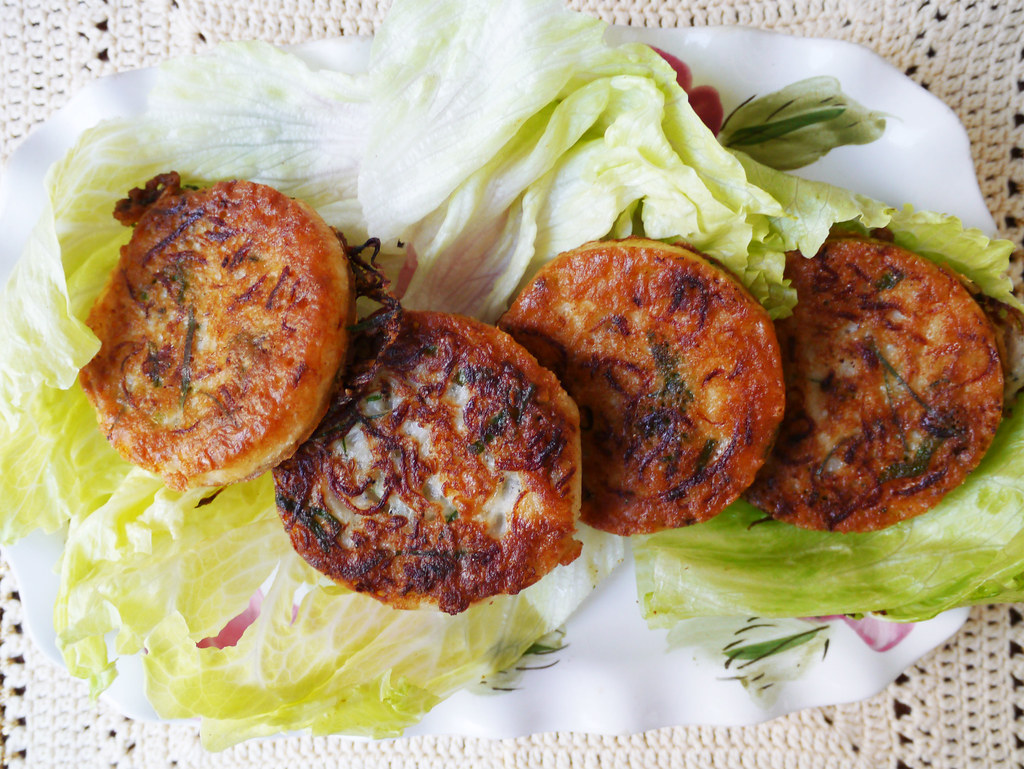
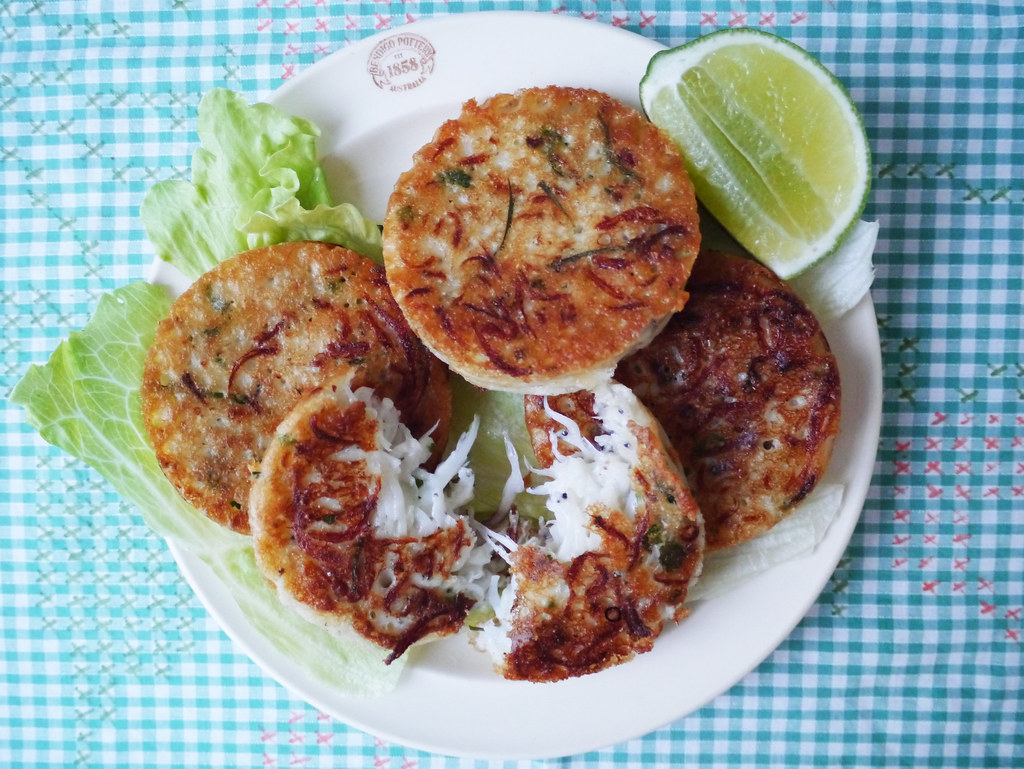
Finding/sourcing the right fish for the fishcakes proved to be an enlightening experience.((1)) I discovered that the type of fish that I was looking for are called ‘whitebait’, but little did I know that there’s much variation under this title.
‘Whitebait’ is a collective term used worldwide to refer to small fish that are in the fry stage, and are collected en masse and eaten whole.((2)) It is sometimes regarded as a delicacy, and the particular definition and species that are marketed as ‘whitebait’ varies in different parts of the world.
In Australia, there are several varieties of whitebait, including the ‘sandy sprats’, while in China, whitebait are often translated to ‘silverfish’. In the photos below of the ‘sandy sprats’ and the ‘silverfish’, even though both are called whitebait, you can see that both are evidently different in type and size.
After viewing the available whitebait at the local fish market, it appears that the Chinese silverfish are the whitebait that I was looking for to recreate the whole fishcakes that I had in mind. Further research online confirmed that Chinese whitebait are ‘often used in Asian style fishcakes’.((3))
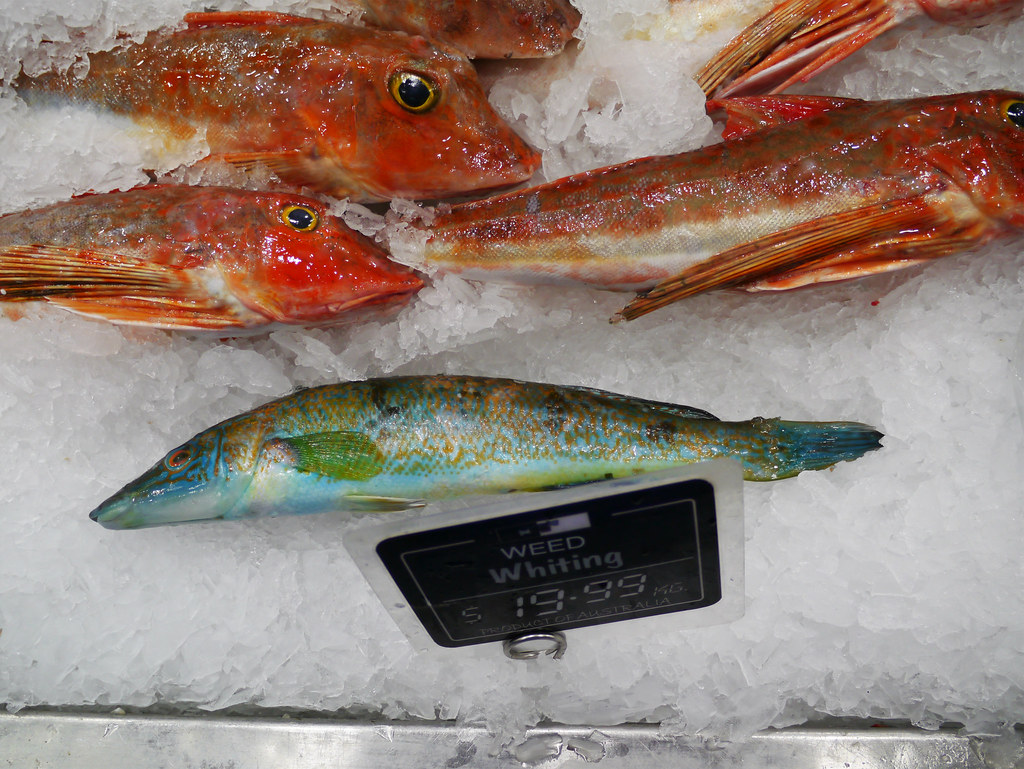
A very cool looking weed whiting.
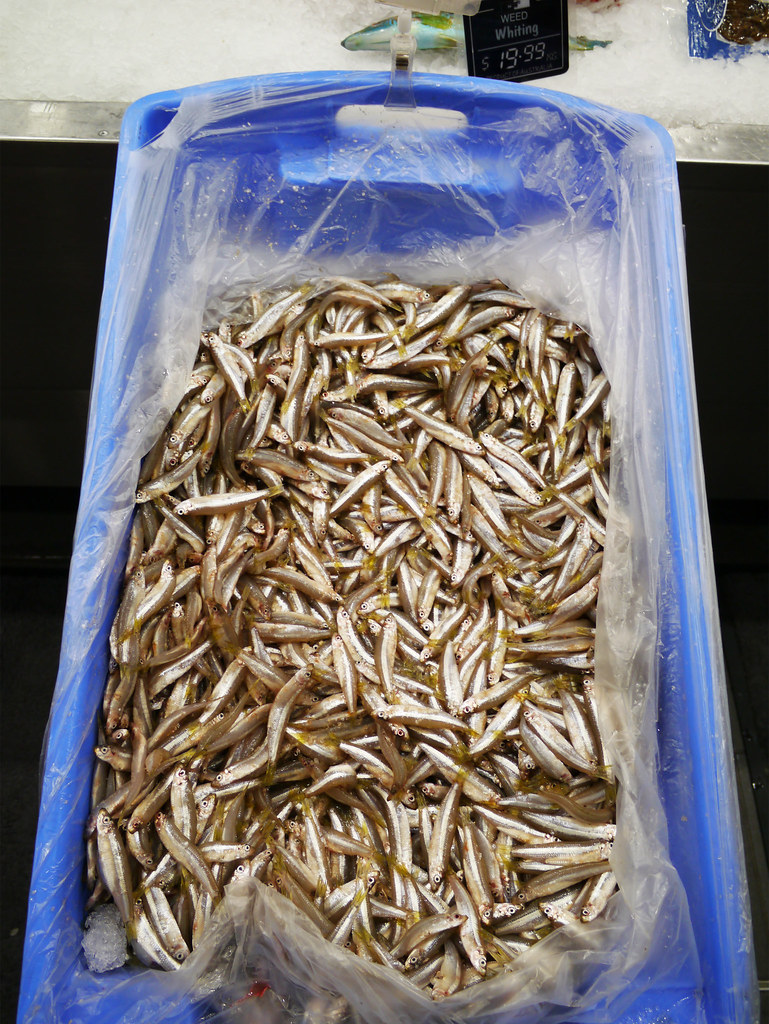
‘Sandy sprats’ whitebait.
The following ‘silverfish fishcake’ recipe is one that I created based on memory of those wonderful cafe fishcakes. I remembered that the natural flavour of the silverfish/whitebait was mild/subtle, and with this recipe, I wanted both the silverfish flavour and appearance to shine through, so I only added a minimal amount of other ingredients/flavours to create the fishcake mixture.
To bind the silverfish together (and to maintain their wonderful white colour), I combined whisked egg white, plain flour, milk and baking powder to create the batter. This batter was simply seasoned with fish sauce, and salt and pepper, and I also added some familiar Asian herbs/ingredients to give the fishcakes an Asian accent. To serve, I created a simple yet flavourful dipping sauce that is reminiscent of Thai fishcake dipping sauce, and complements and enhances these silverfish fishcakes very well.
To create the circular fishcake shapes, I used egg rings, but if you prefer a more rustic look, simply do without them. This recipe is for 1 kg of silverfish which is the size and weight of the box that I bought, and makes about 20 egg ring size fishcakes. These silverfish fishcakes make a great light meal with a side salad, or as a snack or entree. You might even choose to have them in a roll or a sandwich. They’re a delicious and wonderful alternative to the more traditional minced fishcakes. Bon appetit! smile
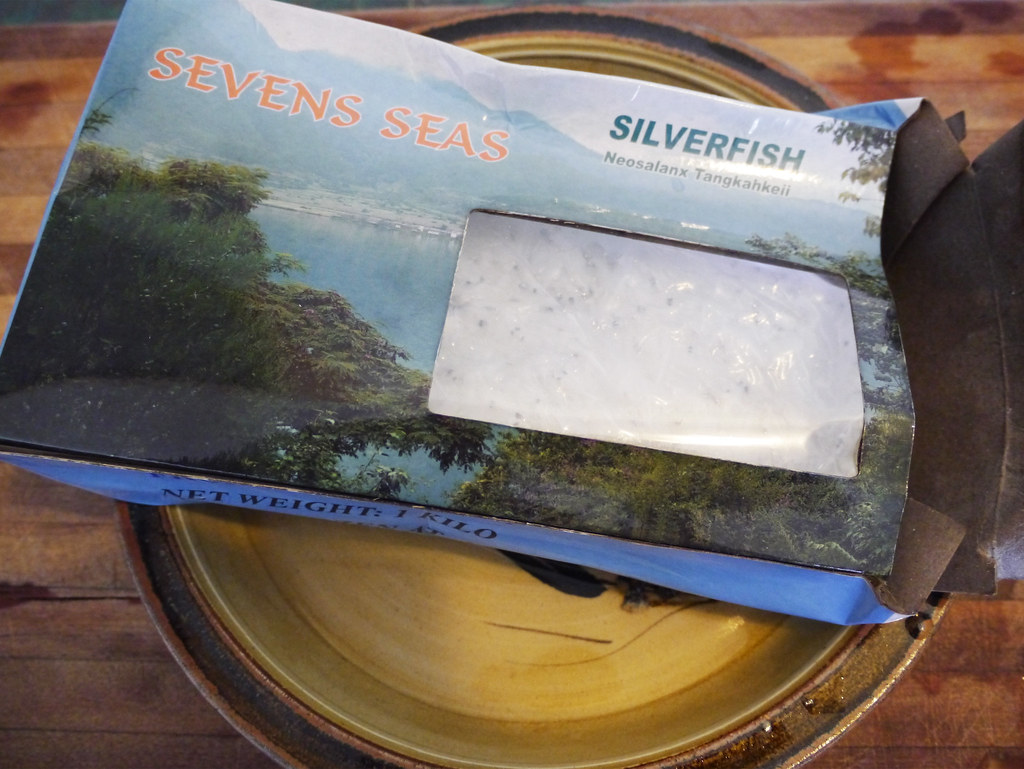
‘Silverfish’ whitebait. Bought frozen and defrosted overnight.
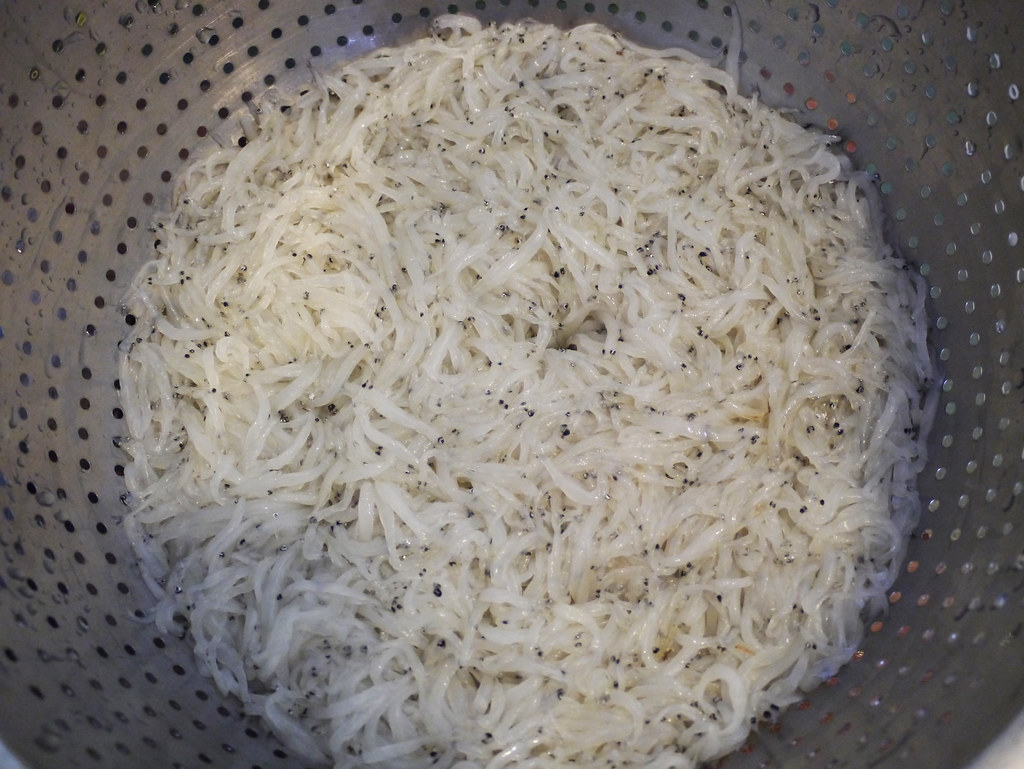
Gently wash the silverfish under running water and remove any debris if any.
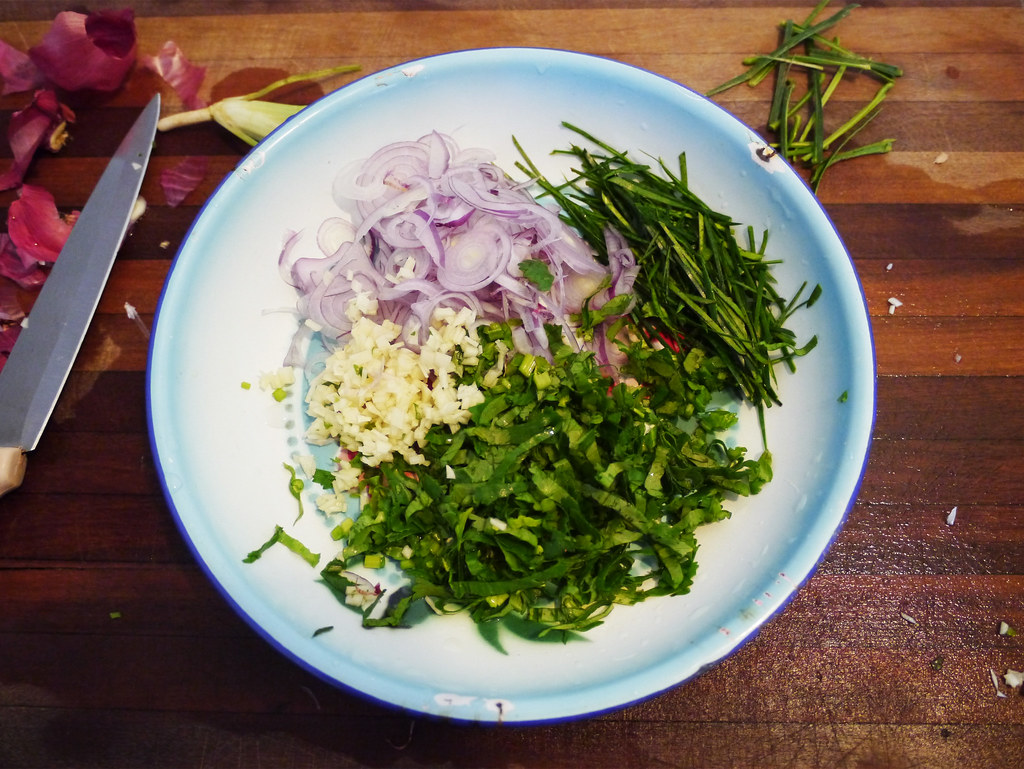
Wash the kaffir lime leaves, cut off the center vein, and then thinly slice into long slivers. Peel the Asian shallot, cut off the root end, and then thinly slice into rings. Wash the coriander, cut off the root, and then thinly slice the leaves. Peel the garlic clove, cut off the root end, thinly slice and than chop into small cubes. Put these ingredients aside.
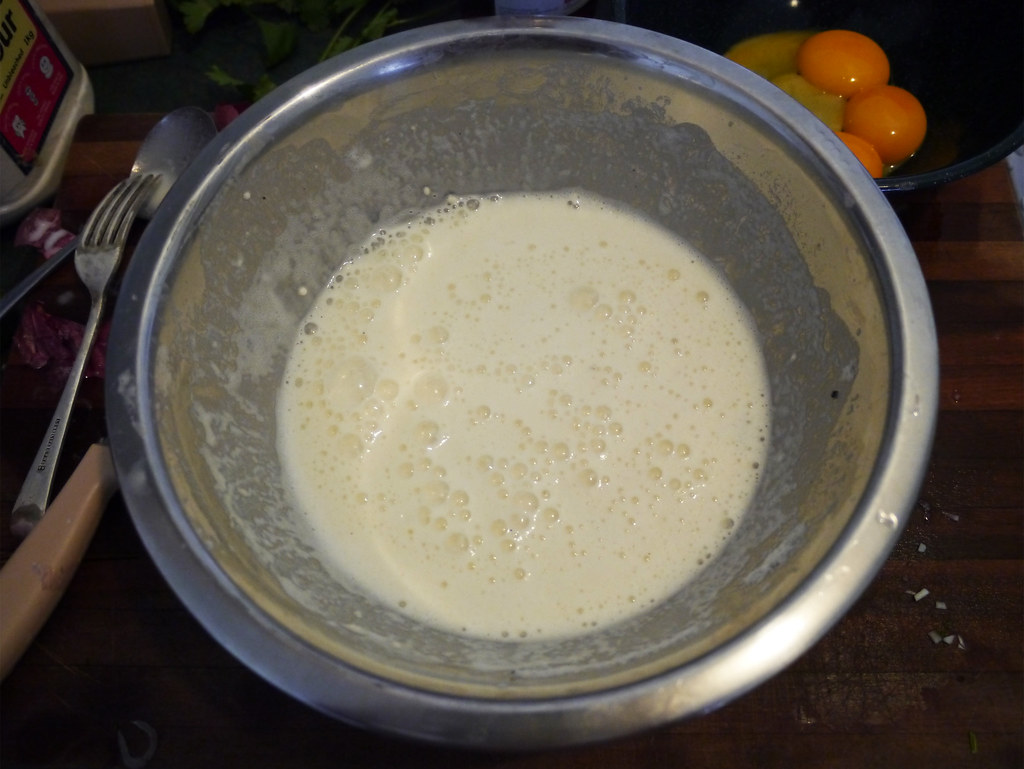
In a mixing bowl, add the egg whites and whisk until it is fluffy. Add the flour, baking powder, milk, fish sauce, salt and pepper, and continue to whisk so that the ingredients are well combined and there are no lumps.
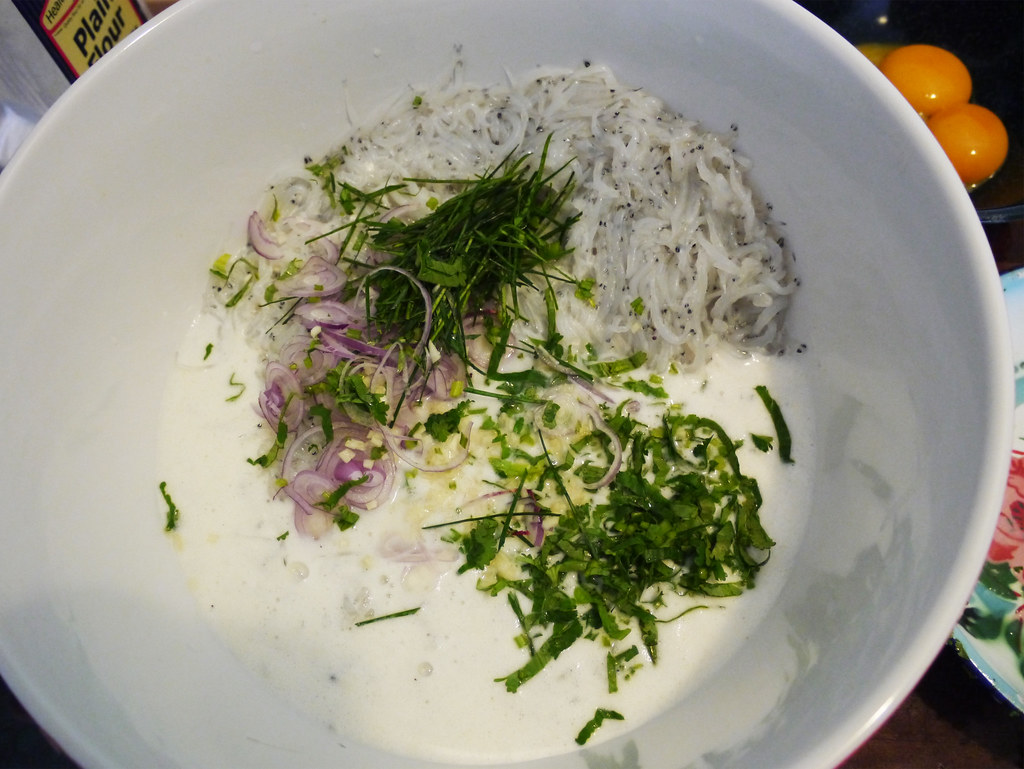
In a large mixing bowl, add the silverfish, the whisked mixture, the sliced kaffir lime leaves, Asian shallots, coriander leaves, and garlic.
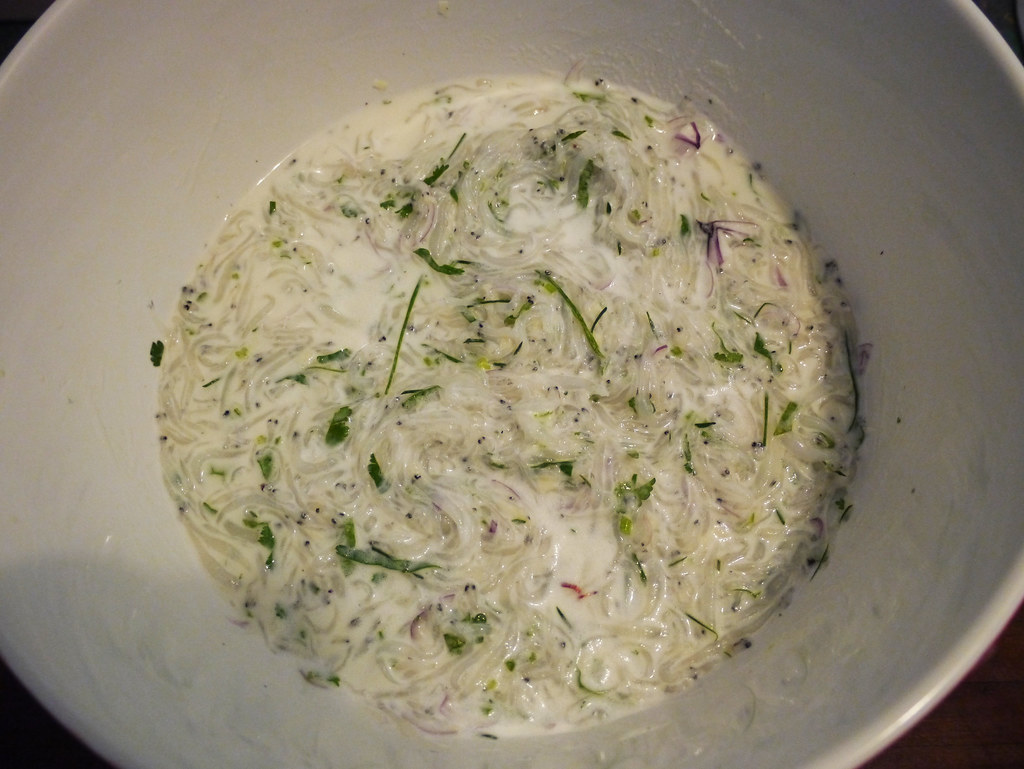
Gently fold/mix together so that everything is well combined. Cover and put aside while you make the dipping sauce.
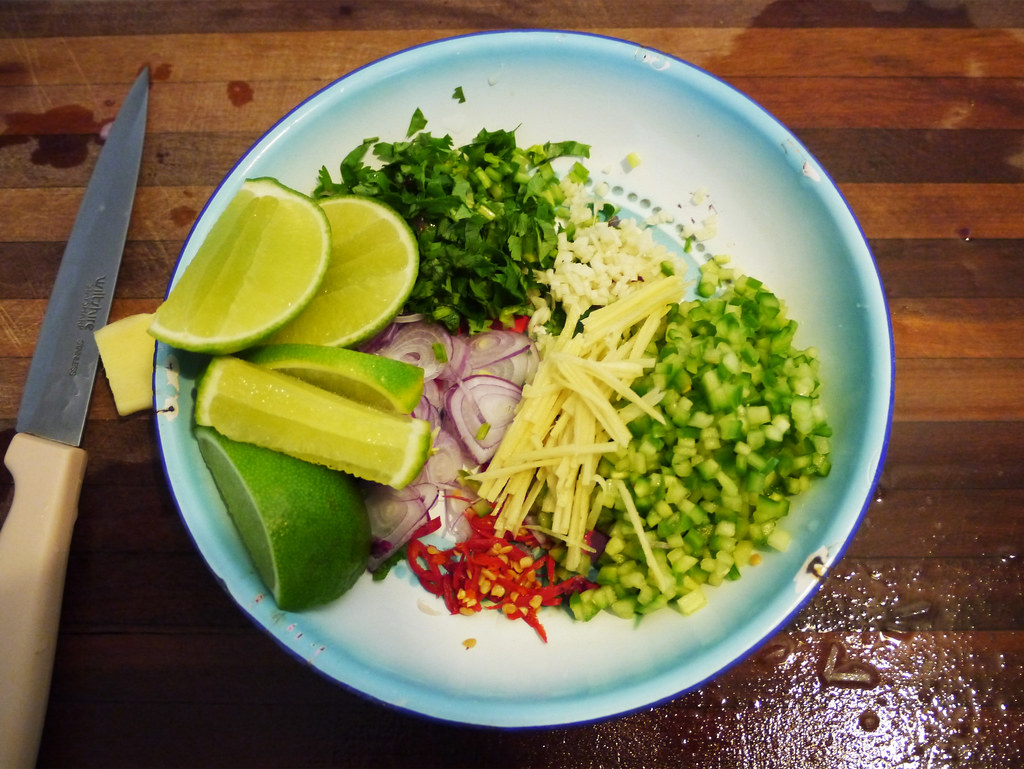
To make the dipping sauce, wash and thinly slice the chili, Asian shallot, and coriander leaves (cut off roots). Wash and cut the cucumber in half (you only need 1/2 of the cucumber). Cut the half cucumber into quarters length-ways, deseed, slice into thin batons, and then chop into small cubes. Peel the garlic clove, cut off the root end, thinly slice and than chop into small cubes. Peel the knob of ginger and then thinly slice into slivers. Wash and slice the lime into wedges and remove the seeds.

In a mixing/serving bowl, add the fish sauce and sugar, and squeeze in the lime juice. Stir well together until the sugar is dissolved. Then, add the chopped ingredients (nuts are optional) and mix together. The flavours you’re aiming for is a smooth, delicious blend of slightly salty, savoury, sweet, sour and spicy. Adjust to suit your palate. Cover and put aside.
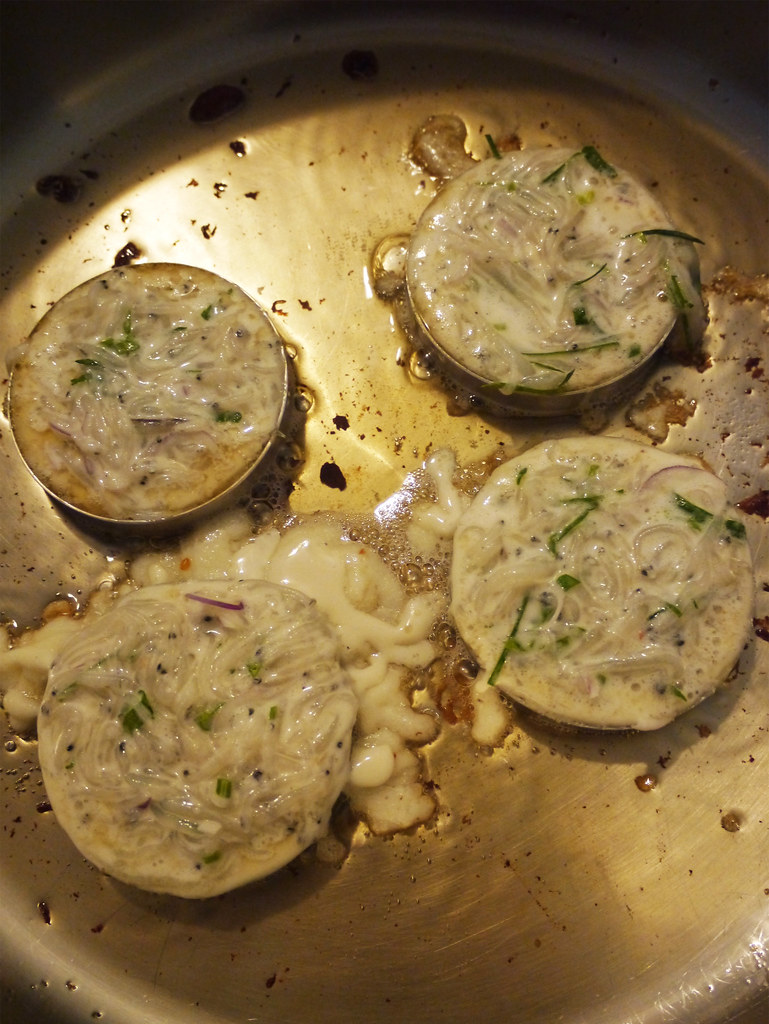
To cook the silverfish fishcakes: in a frypan, add the cooking oil and bring to low-medium heat. Place the egg rings on the pan and with metal tongs, thoroughly coat the egg rings with the oil. Then, carefully add a spoonful of the silverfish mixture in each ring to fill them up, cover with a lid and cook until they’re golden brown.
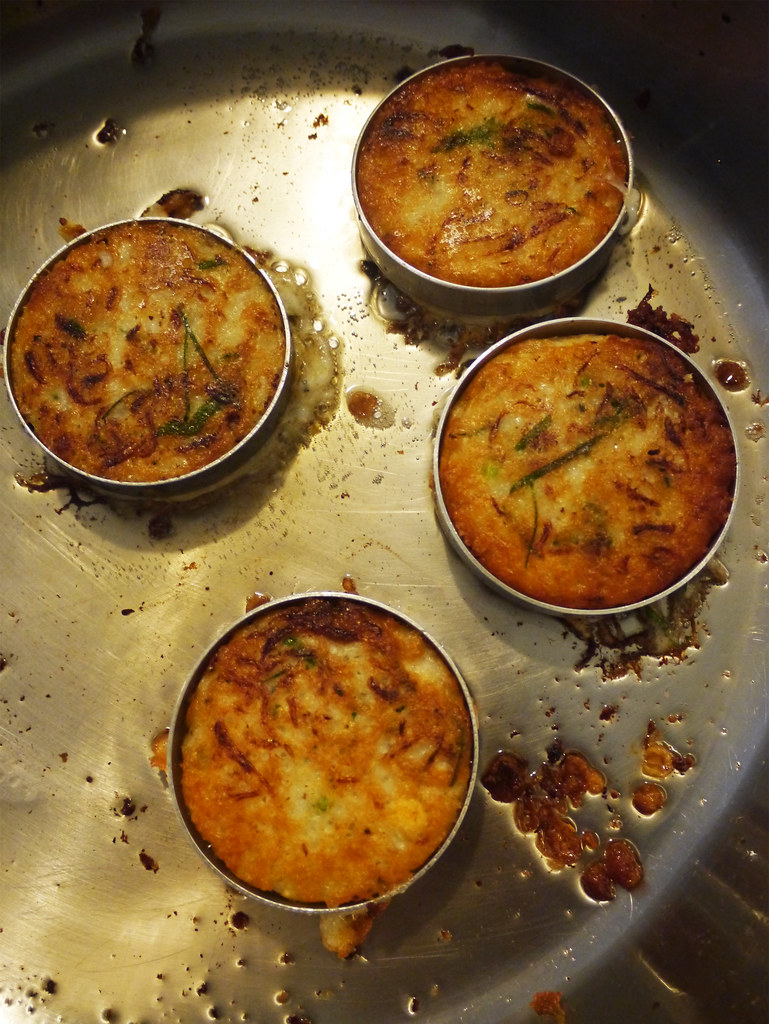
Flip over when the first side is cooked and cook the other side.
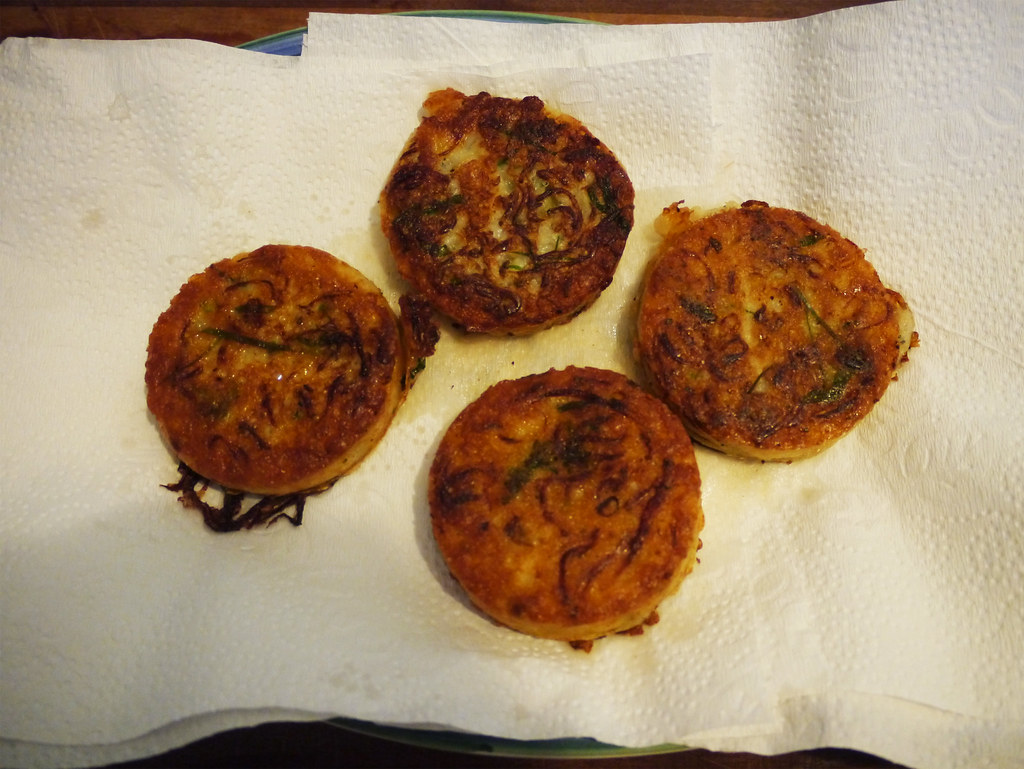
When both sides are cooked, remove from pan and drain on a paper towel.
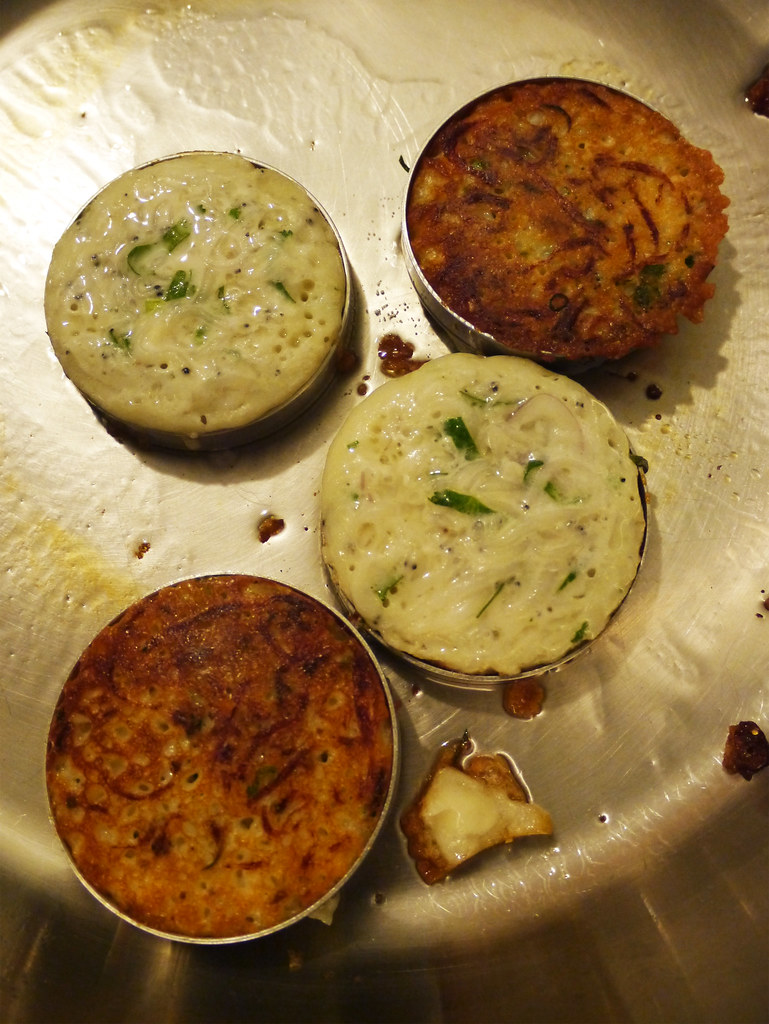
Repeat for the remaining mixture.
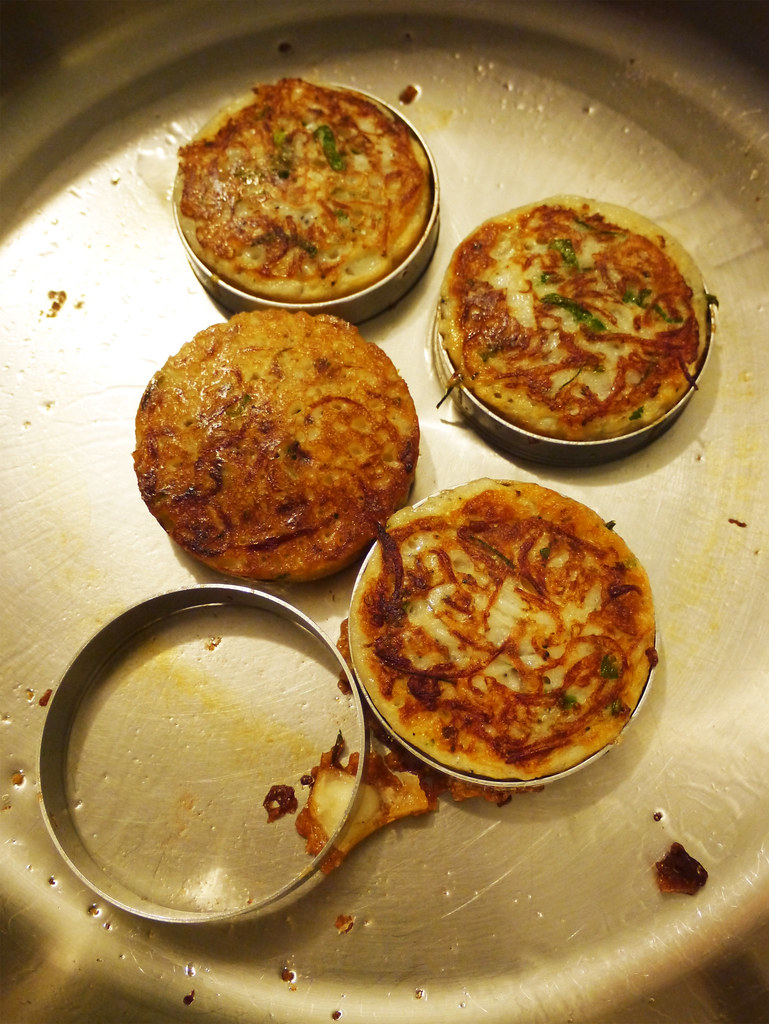
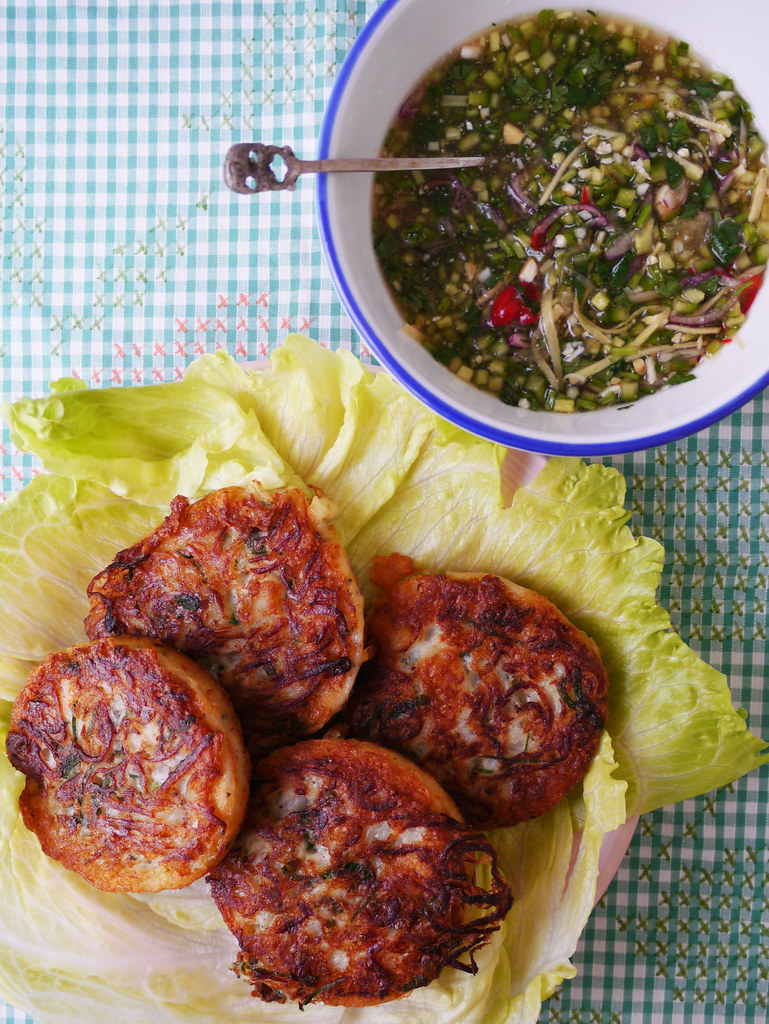
Serve the silverfish fishcakes on a bed of lettuce, with a wedge of lime/lemon and the dipping sauce. Enjoy your meal!
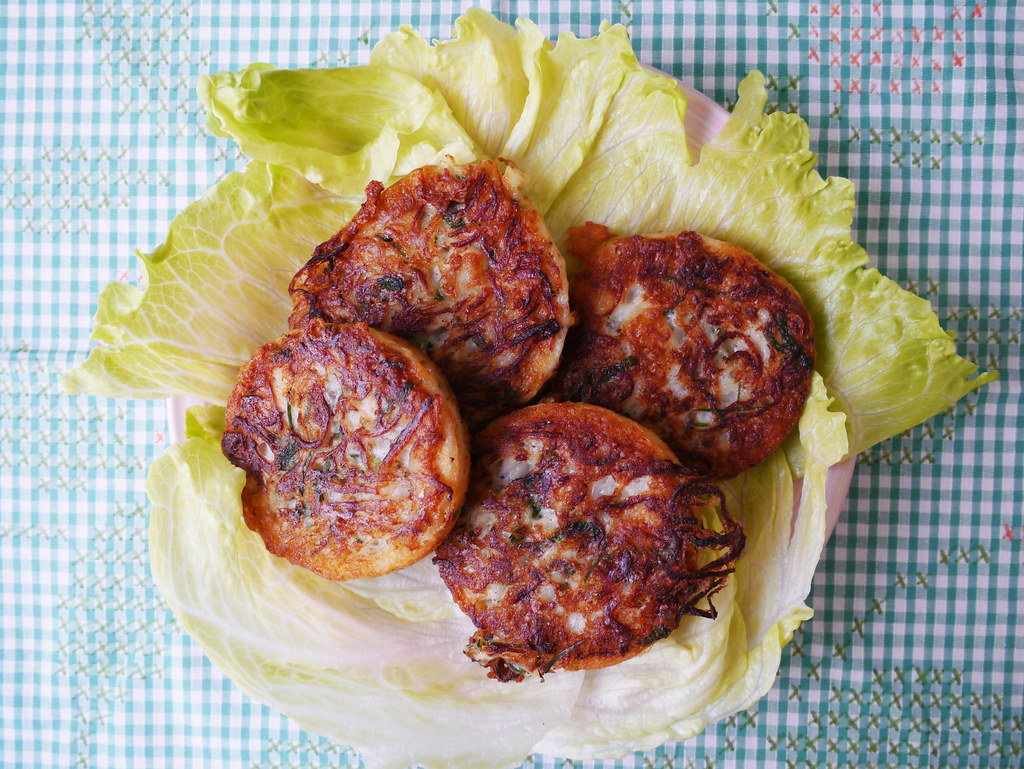
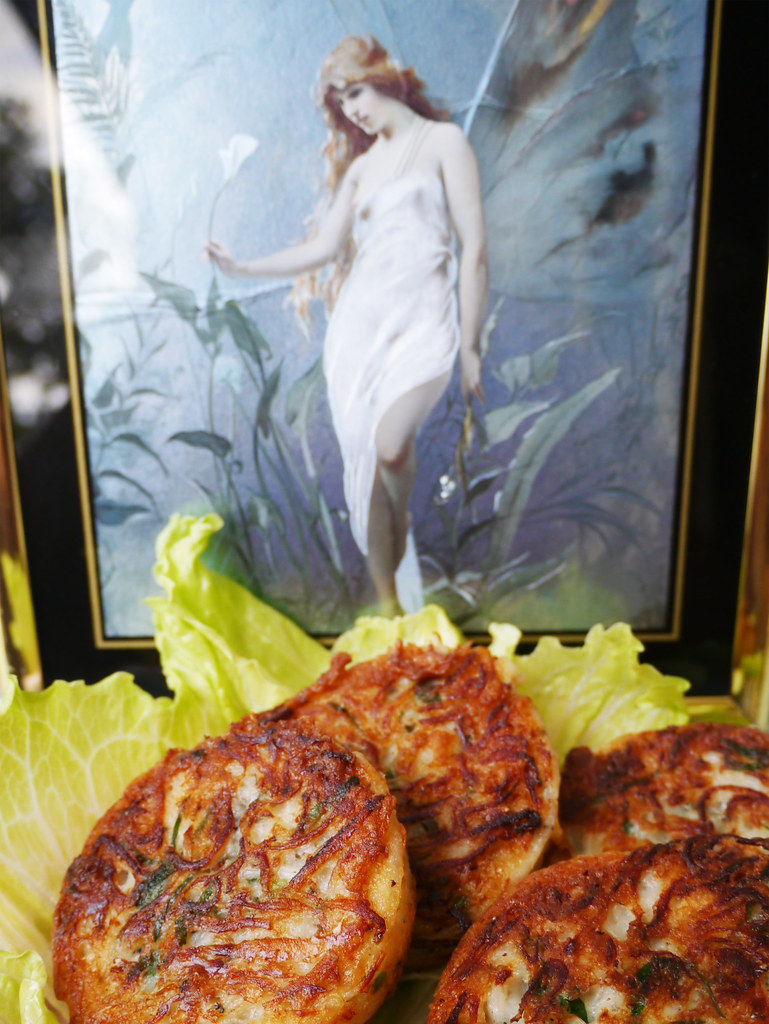
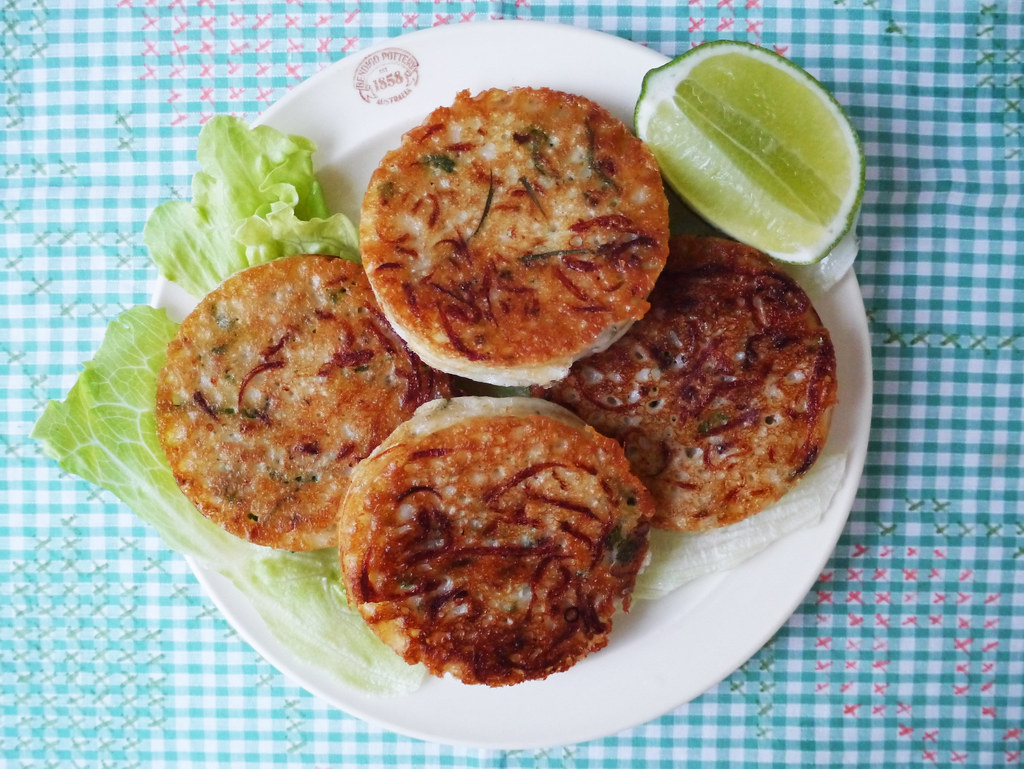
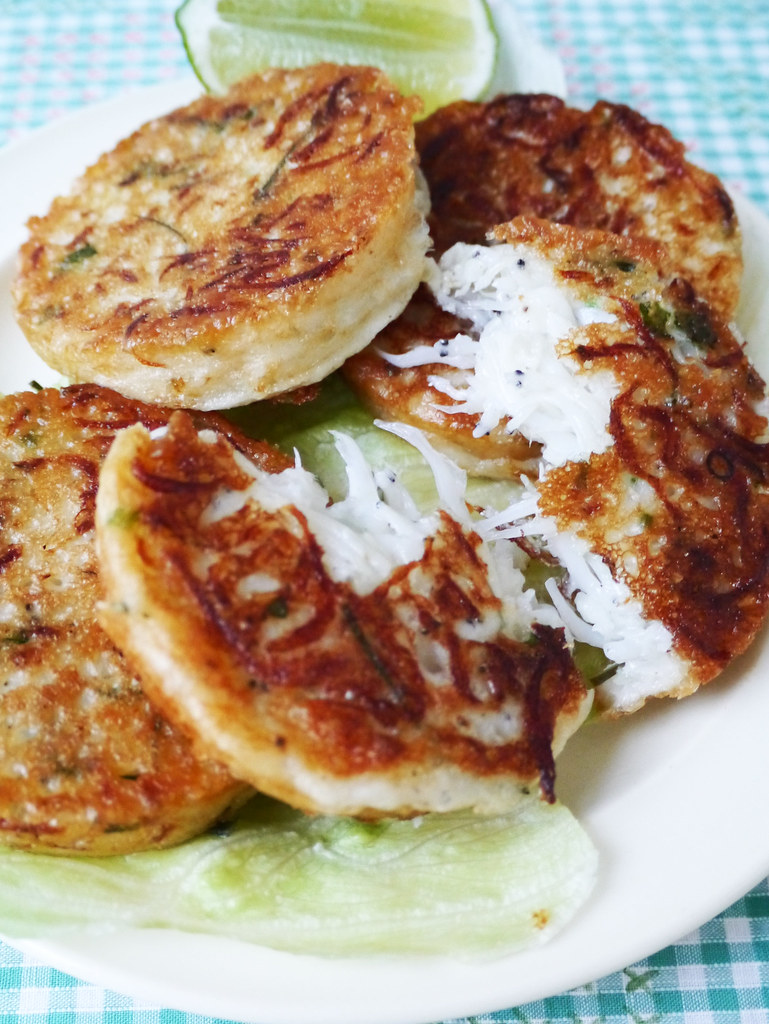
- 1 kg of Chinese whitebait 'silverfish' (Neosalanx Tangkahkeii)
- 10 kaffir lime leaves
- 1 Asian shallot
- 1 coriander
- 1 garlic clove
- 6 egg whites
- 1½ cup of flour
- 2 teaspoon of baking powder
- ½ cup of milk
- 1 teaspoon of fish sauce
- ½ teaspoon of salt
- ¼ teaspoon of ground black pepper
- 3 Tablespoon of cooking oil for shallow frying (more if needed)
- 1 bird's eye chili
- 1 Asian shallot
- 1 coriander
- 1 Lebanese cucumber (you only need ½ of the cucumber)
- 1 clove of garlic
- 1 small knob of ginger
- 1 lime
- 1 Tablespoon of fish sauce
- 1 teaspoon of sugar
- 1 Tablespoon of crushed nuts (optional)
- Gently wash the silverfish under running water and remove any debris if any.
- Wash the kaffir lime leaves, cut off the center vein, and then thinly slice into long slivers. Peel the Asian shallot, cut off the root end, and then thinly slice into rings. Wash the coriander, cut off the root, and then thinly slice the leaves. Peel the garlic clove, cut off the root end, thinly slice and than chop into small cubes. Put these ingredients aside.
- In a mixing bowl, add the egg whites and whisk until it is fluffy.
- Add the flour, baking powder, milk, fish sauce, salt and pepper, and continue to whisk so that the ingredients are well combined and there are no lumps.
- In a large mixing bowl, add the silverfish, the whisked mixture, the sliced kaffir lime leaves, Asian shallots, coriander leaves, and garlic.
- Gently fold/mix together so that everything is well combined. Cover and put aside while you make the dipping sauce.
- To make the dipping sauce, wash and thinly slice the chili, Asian shallot, and coriander leaves (cut off the roots). Wash and cut the cucumber in half (you only need ½ of the cucumber). Cut the half cucumber into quarters (length-ways), deseed, slice into thin batons, and then chop into small cubes. Peel the garlic clove, cut off the root end, thinly slice and than chop into small cubes. Peel the knob of ginger and then thinly slice into slivers. Wash and slice the lime into wedges and remove the seeds. In a mixing/serving bowl, add the fish sauce and sugar, and squeeze in the lime juice. Stir well together until the sugar is dissolved. Then, add the chopped ingredients (nuts are optional) and mix together. The flavours you're aiming for is a smooth, delicious blend of slightly salty, savoury, sweet, sour and spicy. Adjust to suit your palate. Cover and put aside.
- To cook the silverfish fishcakes: in a frypan, add the cooking oil and bring to low-medium heat. Place the egg rings on the pan and with metal tongs, thoroughly coat the egg rings with the oil. Then, carefully add a spoonful the silverfish mixture in each ring to fill them up, cover with a lid and cook until golden brown. Flip over when the first side is cooked, and cook the other side. When both sides are cooked, remove from pan and drain on a paper towel. Repeat for the remaining mixture.
- Serve the silverfish fishcakes on a bed of lettuce, with a wedge of lime/lemon and the dipping sauce. Enjoy your meal!
[[1]]A couple of weeks ago, I inquired about whitebait at the local fish market and discovered that they had ‘silverfish’ (Neosalanx Tangkahkeii) available for sale, albeit frozen and in a box. Looking through the clear plastic packaging, the small/tiny fish appeared to be similar to the ones used in those cafe fishcakes. On the same shelf, I also noticed the tag for Western Australian whitebait, but unfortunately, that shelf space was empty so I couldn’t make a comparison. I further inquired with the fishmonger if they sell fresh/local whitebait, and the fishmonger said they do, and that some would arrive later in the day, which was inconvenient for me. Yesterday, we inquired again over the phone about the fresh whitebait, and we were informed that it was available. We drove to the fish market, and I discovered that the available fresh whitebait are actually called ‘sandy sprats’ which as you can see in the photo, are very different in appearance to the ‘silverfish’ and were not what I had expected, nor was looking for. They were a little too large to make ‘whole’ fishcakes from, so I bought a box of the Chinese ‘silverfish’ instead. For more info on whitebait, go to: http://en.wikipedia.org/wiki/Whitebait. [[1]]
[[2]]Reference: http://www.rawfish.com.au/whitebait-debate/.[[2]]
[[3]]Reference: http://www.inghamroadseafood.com.au/specialities.html.[[3]]
